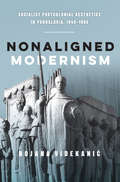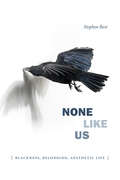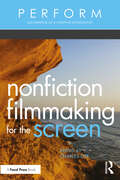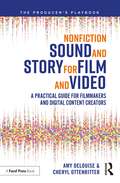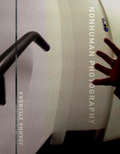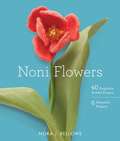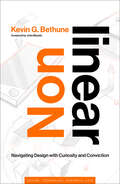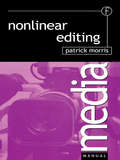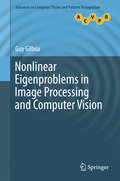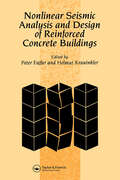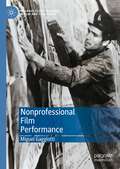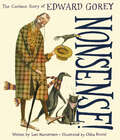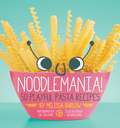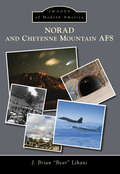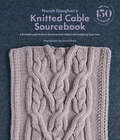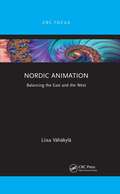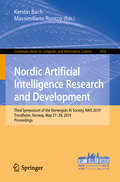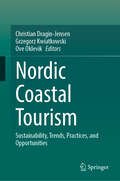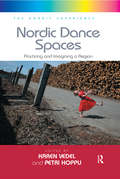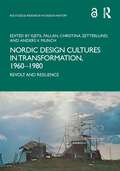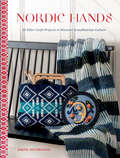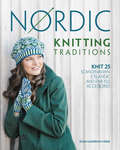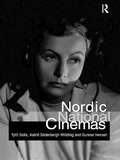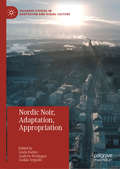- Table View
- List View
Nonaligned Modernism: Socialist Postcolonial Aesthetics in Yugoslavia, 1945–1985
by Bojana VidekanićIn less than half a century, the Socialist Federal Republic of Yugoslavia successfully defeated Fascist occupation, fended off dominating pressures from the Eastern and Western blocs, built a modern society on the ashes of war, created its own form of socialism, and led the formation of the Nonaligned Movement. This country's principles and its continued battles, fought against all odds, provided the basis for dynamic and exceptional forms of art. <p><p>Drawing on archival materials, postcolonial theory, and Eastern European socialist studies, Nonaligned Modernism chronicles the emergence of late modernist artistic practices in Yugoslavia from the end of the Second World War to the mid-1980s. Situating Yugoslav modernism within postcolonial artistic movements of the twentieth century, Bojana Videkanic explores how cultural workers collaborated with others from the Global South to create alternative artistic and cultural networks that countered Western hegemony. Videkanic focuses primarily on art exhibitions along with examples of international cultural exchange to demonstrate that nonaligned art wove together politics and aesthetics, and indigenous, Western, and global influences. <p><p>An interdisciplinary book, Nonaligned Modernism highlights Yugoslavia's key role in the creation of a global modernist ethos and international postcolonial culture.
None Like Us: Blackness, Belonging, Aesthetic Life (Theory Q)
by Stephen BestIt passes for an unassailable truth that the slave past provides an explanatory prism for understanding the black political present. In None Like Us Stephen Best reappraises what he calls “melancholy historicism”—a kind of crime scene investigation in which the forensic imagination is directed toward the recovery of a “we” at the point of “our” violent origin. Best argues that there is and can be no “we” following from such a time and place, that black identity is constituted in and through negation, taking inspiration from David Walker’s prayer that “none like us may ever live again until time shall be no more.” Best draws out the connections between a sense of impossible black sociality and strains of negativity that have operated under the sign of queer. In None Like Us the art of El Anatsui and Mark Bradford, the literature of Toni Morrison and Gwendolyn Brooks, even rumors in the archive, evidence an apocalyptic aesthetics, or self-eclipse, which opens the circuits between past and present and thus charts a queer future for black study.
Nonfiction Filmmaking for the Screen (PERFORM)
by Charles DyeCombining essays and interviews with nonfiction filmmakers, this collection explores the business side of nonfiction media creation for film and television. Over 30 industry professionals dispel myths about the industry and provide practical advice on topics such as how to break into the field; how to develop, nurture, and navigate business relationships; and how to do creative work under pressure. Readers will also learn about the entrepreneurial expectations in relation to marketing, strategies for contending with the emotional highs and lows of creating nonfiction media, and money management whilst pursuing a career in creating nonfiction media. Written for undergraduates and graduates studying filmmaking, media production, and documentary filmmaking, as well as aspiring nonfiction media creators and documentary filmmakers, this book provides readers with a wealth of first-hand information that will help them create their own opportunities and pursue a career in nonfiction film and television.
Nonfiction Sound and Story for Film and Video: A Practical Guide for Filmmakers and Digital Content Creators (The Producer's Playbook)
by Amy DeLouise Cheryl OttenritterThis book guides nonfiction storytellers in the art of creatively and strategically using sound to engage their audience and bring stories to life. Sound is half of film and video storytelling, and yet its importance is often overlooked until a post-production emergency arises. Written by two experienced creators—one a seasoned nonfiction producer/director with a background in music, and one a sound designer who owns a well-regarded mix studio—this book teaches nonfiction producers, filmmakers, and branded content creators how to reimagine their storytelling by improving sound workflow from field to post. In addition to real-world examples from the authors’ own experiences, interviews with and examples from industry professionals across many genres of nonfiction production are included throughout. Written in a conversational style, the book pinpoints practical topics and considerations like 360 video and viewer accessibility. As such, it is a vital point of reference for all nonfiction filmmakers, directors, and producers, or anyone wanting to learn how to improve their storytelling. An accompanying Companion Website offers listening exercises, production sound layout diagrams, templates, and other resources.
Nonhuman Photography (The\mit Press Ser.)
by Joanna ZylinskaA new philosophy of photography that goes beyond humanist concepts to consider imaging practices from which the human is absent, as both subject and agent.Today, in the age of CCTV, drones, medical body scans, and satellite images, photography is increasingly decoupled from human agency and human vision. In Nonhuman Photography, Joanna Zylinska offers a new philosophy of photography, going beyond the human-centric view to consider imaging practices from which the human is absent. Zylinska argues further that even those images produced by humans, whether artists or amateurs, entail a nonhuman, mechanical element—that is, they involve the execution of technical and cultural algorithms that shape our image-making devices as well as our viewing practices. At the same time, she notes, photography is increasingly mobilized to document the precariousness of the human habitat and tasked with helping us imagine a better tomorrow. With its conjoined human-nonhuman agency and vision, Zylinska claims, photography functions as both a form of control and a life-shaping force.Zylinska explores the potential of photography for developing new modes of seeing and imagining, and presents images from her own photographic project, Active Perceptual Systems. She also examines the challenges posed by digitization to established notions of art, culture, and the media. In connecting biological extinction and technical obsolescence, and discussing the parallels between photography and fossilization, she proposes to understand photography as a light-induced process of fossilization across media and across time scales.
Noni Flowers: 40 Exquisite Knitted Flowers
by Nora BellowsDesigner Nora J. Bellows's extraordinary Noni® bag and flower patterns have earned her acclaim and endeared her to a loyal following of knitters all over the world. Now, in her first book, she offers lifelike knitted flowers that rival the beauty of true botanicals. This is a collection of luscious designs and essential techniques that knitters will turn to again and again. Inside, you'll find: * 40 exceptional knitted and felted flowers, from Angel's Tears Ddaffodils to ylang ylang * 6 beautiful yet practical garment, accessory, and home projects perfect for floral embellishment * Clear instructions for knitting, felting, wiring, and finishing your work
Nonlinear: Navigating Design with Curiosity and Conviction (Simplicity: Design, Technology, Business, Life)
by Kevin G. BethuneFrom the acclaimed designer and bestselling author of Reimagining Design, a nonlinear approach to navigating design&’s nuances in pursuit of meaningful innovation.In Nonlinear, Kevin Bethune shows us that we can reject trodden paths of digital or physical product creation by taking advantage of a nonlinear approach. To unlock meaningful innovation that breeds new and novel outcomes, he writes, teams need to embark on a journey into the proverbial forest of ambiguity, the result of a rapidly converging, dynamic, and exponentially changing landscape. The journey is less about getting it right or wrong, and more about using the information we have at our disposal to understand our choices and unlock new learning. Nonlinear begins by taking the reader through Bethune&’s professional zigs and zags. The author explains that while his interdisciplinary leaps were rare at the time he took them, these varied experiences unlocked perspectives about design and innovation that uniquely prepared him for our present moment and for the future. He then showcases the role of quantitative information to strategically frame and set boundary conditions for our creative exploration, and he highlights the role of qualitative insights to provide the substance necessary to begin crafting solutions that address unmet needs. The book also identifies accelerants (or flywheels) that will help readers as they reflect on their journey through the forest of ambiguity, with a specific emphasis on diversity, a key theme for Bethune, a Black man who has navigated new horizons. Readers will enjoy having the chance to customize the author&’s perspectives and make them their own at both an individual and a team level.
Nonlinear Editing (Media Manuals Ser.)
by Patrick MorrisNonlinear is a buzzword for every broadcaster and facility house worldwide. Systems range from the humble to the exotic, and despite the growing acceptance of the technology, many users, both new and experienced, find the complexity of the operation and the time spent loading the material and rendering effects difficult to manage at first. Non-linear editing also comes with its own specialist language, requiring each editor to be conversant with a new range of skills from day one. As desktop systems improve the role of the traditional editor is constantly evolving and expanding. This is an operational manual for professional trainees and students in the post-production industry. It will also serve as a useful reference tool for producers and directors. Written in a concise and clear manner, the book serves as a practical guide to the efficient management and operation of non-linear editing systems. It describes the technology involved, the essential techniques to be mastered including on-line and off-line editing, project management, rendering effects, working with graphics and audio, and adding third party applications. Designed for quick and easy reference, this is a practical user guide to non-linear editing that comes complete with an extensive jargon buster that will get you fully conversant with the technology in a short space of time.Patrick Morris is a Trainer in Post-Production for the Television Corporation of Singapore and the Singapore Broadcasting Authority as well as Chairman of the South East Asia User Group. He is an AVID Certified Trainer with a working knowledge of Lightworks, Media 100, Quantel, D Vision and other systems. Formerly a consultant and Senior Editor for BBC, ITV and SKY TV, he also spent many years a Training Manager for BBC Wood Norton and as Senior Video-Tape Editor for Television South West.
Nonlinear Eigenproblems in Image Processing and Computer Vision (Advances in Computer Vision and Pattern Recognition)
by Guy GilboaThis unique text/reference presents a fresh look at nonlinear processing through nonlinear eigenvalue analysis, highlighting how one-homogeneous convex functionals can induce nonlinear operators that can be analyzed within an eigenvalue framework. The text opens with an introduction to the mathematical background, together with a summary of classical variational algorithms for vision. This is followed by a focus on the foundations and applications of the new multi-scale representation based on non-linear eigenproblems. The book then concludes with a discussion of new numerical techniques for finding nonlinear eigenfunctions, and promising research directions beyond the convex case.Topics and features: introduces the classical Fourier transform and its associated operator and energy, and asks how these concepts can be generalized in the nonlinear case; reviews the basic mathematical notion, briefly outlining the use of variational and flow-based methods to solve image-processing and computer vision algorithms; describes the properties of the total variation (TV) functional, and how the concept of nonlinear eigenfunctions relate to convex functionals; provides a spectral framework for one-homogeneous functionals, and applies this framework for denoising, texture processing and image fusion; proposes novel ways to solve the nonlinear eigenvalue problem using special flows that converge to eigenfunctions; examines graph-based and nonlocal methods, for which a TV eigenvalue analysis gives rise to strong segmentation, clustering and classification algorithms; presents an approach to generalizing the nonlinear spectral concept beyond the convex case, based on pixel decay analysis; discusses relations to other branches of image processing, such as wavelets and dictionary based methods.This original work offers fascinating new insights into established signal processing techniques, integrating deep mathematical concepts from a range of different fields, which will be of great interest to all researchers involved with image processing and computer vision applications, as well as computations for more general scientific problems.
Nonlinear Seismic Analysis and Design of Reinforced Concrete Buildings: Workshop on Nonlinear Seismic Analysis of Reinforced Concrete Buildings, Bled, Slovenia, Yugoslavia, 13-16 July 1992
by H. Krawinkler P. FajfarForty scientists working in 13 different countries detail in this work the most recent advances in seismic design and performance assessment of reinforced concrete buildings. It is a valuable contribution in the mitigation of natural disasters.
Nonprofessional Film Performance (Palgrave Close Readings in Film and Television)
by Miguel GaggiottiThis book offers a critical account of film performances by nonprofessional actors. Nonprofessional actors — actors without previous acting training or experience — have performed in films since the days of the Lumière brothers. Generally associated with currents such as Early Soviet Cinema, Italian Neorealism and New Argentine Cinema, nonprofessional actors also feature prominently in the works of celebrated directors including Pier Paolo Pasolini, Robert Bresson and Joanna Hogg. Since the turn of the century and the rise of digital filmmaking, the performances of nonprofessional actors have remained a staple of independent cinemas from all over the world, including films associated with the loose trend often referred to as Slow Cinema. Despite their enduring presence in acclaimed and widely discussed films, nonprofessional actors have received scant scholarly attention. This book proposes to analyse exemplary nonprofessional performances from across the history of cinema as a means of illuminating their significance and celebrating the performers’ contributions to the films.
Nonsense! the Curious Story of Edward Gorey
by Lori MortensenA beautifully illustrated and lyrical picture-book biography of eccentric and beloved writer and artist Edward Gorey In this lyrical biography of one of literature&’s most creepily creative authors and illustrators, kids will learn about the inspiration behind a generation of creators, from Lemony Snicket to Tim Burton. Known for, among other things, wearing a large fur coat wherever he went, storyteller Edward Gorey was respected for both his brilliance and his eccentricity. As a child, he taught himself to read and skipped several grades before landing at Harvard (after a brief stint in the army). Then he built a name for himself as a popular book illustrator. After that, he went on to publish well over one hundred of his own books, stories that mingled sweetness and innocence, danger and darkness, all mixed with his own brand of silliness. Illustrated with Gorey-like humor and inspiration by Chloe Bristol, this stunning picture book biography about this beloved creator is the first for children.
Noodlemania!: 50 Playful Pasta Recipes
by Melissa BarlowYou'll go noodle crazy with the playful and colorful pasta recipes in Noodlemania! It's filled with hot and cold main dishes, salads, and even desserts! Try Super Stuffed Monster Mouths made with jumbo pasta shells, Rapunzel Pastamade with extra-long spaghetti, Spider Cookies made with crunchy ramen noodles, or Gloppy Green Frog Eye Salad made with acini di pepe. Noodlemania! also teaches basic math skills and includes fun trivia. Which pasta name means "little ears"? What's the world record for the largest meatball ever made? Kids will have fun in the kitchen while sharpening their cooking skills with Noodlemania!From the Trade Paperback edition.
Nora Heysen: A Portrait
by Anne-Louise WilloughbyHahndorf artist Nora Heysen was the first woman to win the ArchibaldPrize, and Australia's first female painter to be appointed as an officialwar artist. A portraitist and a flower painter, Nora Heysen's life wasdefined by an all-consuming drive to draw and paint. In 1989, aged 78,Nora re-emerged on the Australian art scene when the nation's majorart institutions restored her position after years of artistic obscurity.Extensively researched, and containing artworks and photographs from thepainter's life, Nora Heysen: a portrait is the first biography of the artist, andit has been enthusiastically embraced by the Heysen family. This authorisedbiography coincides with a major retrospective of the works of Nora andher father, landscape painter Hans Heysen, to be held at the NationalGallery of Victoria in March 2019.
NORAD and Cheyenne Mountain AFS (Images of Modern America)
by J. Brian LihaniThe North American Aerospace Defense Command (NORAD) was established as a result of an agreement between Canada and the United States to defend against increasing Soviet military capabilities. In the early years of World War II, the leaders of the United States and Canada agreed to military cooperation, thus beginning strong defense relations still evident today. Military and civilian personnel from both countries work together for the defense of North America. Established as a formal military command in 1958, NORAD has been headquartered in Colorado Springs since its inception. In the late 1950s, a decision was made to move the Continental Air Defense Command combat operations center to an underground facility to provide a secure and hardened location for air defense operations. After several locations were evaluated, Cheyenne Mountain, south of Colorado Springs, Colorado, was chosen for the new command center. In operation since 1966, Cheyenne Mountain Air Force Station continues to be America's fortress.
Norah Gaughan's Knitted Cable Sourcebook: A Breakthrough Guide to Knitting with Cables and Designing Your Own
by Norah GaughanA groundbreaking stitch dictionary from a cable master, featuring 150 cable stitch patterns and fifteen garment patterns to test your skills.This guide for the modern knitter presents more than 150 new and innovative cable stitch patterns ranging from basic to complex and offers enlightening insight into how cables are engineered, how knitters can design their own, and how knitters can mix and match cables in a knitting pattern. Teacher, author, and master knitter Norah Gaughan shares her design principles and offers clear cable-making instruction throughout, always in a conversational, easy-to-understand voice that proceeds naturally, as one cable idea leads to the next. Master the art of cable knitting, then test your newfound skills with the fifteen garment patterns for wraps, sweaters, and accessories.
Nordic Animation: Balancing the East and the West (Focus Animation Ser.)
by Liisa VähäkyläThis book examines the state of the animation industry within the Nordic countries. It looks at the success of popular brands such as Moomins and The Angry Birds, studios such as Anima Vitae and Qvisten, and individuals from the Nordics who have made their mark on the global animation industry. This book begins with some historical findings, before moving to recount stories of some of the most well-known Nordic animation brands. A section on Nordic animation studios examines the international success of these companies and its impact on the global animation industry. This book is forward-thinking in scope and places these stories within the context of what the future holds for the Nordic animation industry. This book will be of great interest to those in the fields of animation and film studies, as well as those with a general interest in Nordic animation.
Nordic Artificial Intelligence Research and Development: Third Symposium of the Norwegian AI Society, NAIS 2019, Trondheim, Norway, May 27–28, 2019, Proceedings (Communications in Computer and Information Science #1056)
by Kerstin Bach Massimiliano RuoccoThis book constitutes the refereed proceedings of the Third Symposium of the Norwegian AI Society, NAIS 2019, held in Trondheim, Norway, in May, 2019. The 11 full papers and 3 short papers were carefully reviewed and selected from 21 submissions. The papers focus on all aspects of: artificial intelligence; machine learning; knowledge representation; robotics; planning and scheduling; natural language processing; computer vision; search algorithms; multi-agent-systems; industrial applications; and philosophical and ethical foundations.
Nordic Coastal Tourism: Sustainability, Trends, Practices, and Opportunities
by Christian Dragin-Jensen Grzegorz Kwiatkowski Ove OklevikThis book explores sustainable tourism development and examines the development strategies of different coastal regions in the Nordic region. In recent decades, tourism research has been topical among researchers in the Nordic region and in international tourism literature. Especially important in this is research on coastal tourism, which is both a linear and area-based activity. An increased interest in coastal tourism has been determined by the fact that around 40 percent of the world’s population lives on the coast or within the coastal zone, and these communities are dependent on coastal tourism besides their other professions, such as fisheries, agriculture, and commercial port activities. Nordic coasts combine a rich maritime heritage and tradition with an unrivalled diversity of landscapes and natural refuges. Its oceans and seas are known for their biological richness and great beauty. Coastal and maritime tourism constitutes one of the Nordic countries' most important touristic thematic sub-sectors. With further perspectives for growth in the coming years, coastal and maritime tourism’s full potential is yet to be unveiled. Guaranteeing the conditions for sustainable coastal and maritime tourism development may significantly contribute to Nordic's economic growth and employment. It can also support the sustainable development of the more remote coastal regions, bringing the Nordics closer together and endowing coastal communities with sustainable solutions for the future.
Nordic Dance Spaces: Practicing and Imagining a Region (The Nordic Experience #4)
by Petri HoppuDance has been connected to the practices and ideologies that have shaped notions of a Nordic region for more than a century and it is ingrained into the culture and society of the region. This book investigates different dance phenomena that have either engaged with or dismantled notions of Nordicness. Looking to the motion of dancers and dance forms between different locations, organizations and networks of individuals, its authors discuss social dancing, as well as historical processes associated with collaborations in folk dance and theatre dance. They consider how similarities and differences between the Nordic countries may be discerned, for instance in patterns of reception at the arrival of dance forms from outside the Nordic countries - and vice versa, how dance from the Nordic countries is received in other parts of the world, as seen for example in the Nordic Cool Festival at the Kennedy Centre in 2013. The book opens a rare window into Nordic culture seen through the prism of dance. While it grants the reader new insights into the critical role of dance in the formation and imagining of a region, it also raises questions about the interplay between dance practices and politics.
Nordic Design Cultures in Transformation, 1960–1980: Revolt and Resilience (Routledge Research in Design History)
by Christina Zetterlund Anders V. Munch Kjetil FallanCovering the 1960s and 1970s, this volume explores new ways of investigating, comparing and interpreting the different domains of design culture across the Nordic countries. Challenging the traditional narrative, this volume argues that the roots of the most prominent features of Nordic design’s contemporary significance are not to be found amongst the objects for the home collectively branded as ‘Scandinavian Design’ to great acclaim in the 1950s, but in the discourses, institutions and practices formed in the aftermath of that oft-told success story, during the turbulent period between 1960 and 1980. This is achieved by employing multidisciplinary approaches to connect the domains of industrial production, marketing, consumption, public institutions, design educations, trade journals as well as public debates and civic initiatives forming a design culture. This book makes a significant contribution to current, international agendas of historiographical critique focusing on transnational relations and the deconstruction of national design histories. This book will be of interest to scholars in design, design history and Scandinavian studies.
Nordic Hands: 25 Fiber Craft Projects to Discover Scandinavian Culture
by Anita OsterhaugUnderstand the culture and traditions behind the charm, to enjoy meaningful makingMeets the needs of two content-hungry audiences: fiber artists and Nordic craft enthusiastsAdopt some of Nordic life's cultural norms, like gökotta (to have a picnic at dawn to hear the first bird&’s song)
Nordic Knitting Traditions: Knit 25 Scandinavian, Icelandic and Fair Isle Accessories
by Susan Anderson-FreedKnit Gorgeous Colorwork Accessories in the Nordic Tradition! Traditional Scandinavian and Icelandic designs are given new life in the projects found in Nordic Knitting Traditions. 25 projects feature original floral, star, feather and geometric motifs, all knit in fresh and modern colors. With a diverse collection of hats, tams, mittens, gloves, socks, knee-highs and legwarmers, you'll find plenty of jaw-dropping, colorful accessories to knit for yourself and the ones you love. Inside: Thoughtful construction and full-color charts make these designs easy to knit. Variations for knitting mittens and gloves in two ways and lengthening socks into knee-highs, as well as fully charted alternative colorways, allow you to achieve customized looks. "Complete the Look" instructions guide you to patterns that match, making it easy to create coordinating accessories. Tips and tricks for sizing, construction and stress-free knitting help you knit items that will become family heirlooms. Nordic Knitting Traditions celebrates the roots of stranded knitting with inspiring designs and elegant colorways. Start knitting your own piece of history today.
Nordic National Cinemas
by Gunnar Iverson Astrid Soderbergh Widding Tytti SoilaNordic National Cinemas explores the film histories and cultures of Denmark, Finland, Iceland, Norway and Sweden. The authors examine each country's domestic film production, social and political context and domestic audiences from the beginning of this century to the twentieth century.The authors not only explore the work of internationally renowned figures such as Mauritz Stiller, Victor Sjostrom, Carl Dreyer and Ingmar Bergman, directors of such classics as Vampyr, Ordet, Wild Strawberries and Cries and Whispers, but also nationally important film makers such as August Blom, Bodil Ipsen, Lau Lauritzen and Nils Malmros, they also discuss contemporary film makers including Gabriel Axel, director of Babette's Feast, the Kaurismaki brothers, directors of The Match Factory Girl and The Leningrad Cowboys and the recently acclaimed Lars von Trier, director of Breaking the Waves.
Nordic Noir, Adaptation, Appropriation (Palgrave Studies in Adaptation and Visual Culture)
by Andrew Nestingen Linda Badley Jaakko SeppäläThis book argues that adaptation is an underrecognized yet constitutive element of Nordic noir. In so doing, it reframes the prevailing critical view. Now celebrated for its global sweep, Nordic noir is equally a transmedial phenomenon. Nordic Noir, Adaptation, Appropriation deploys the tools of current adaptation studies to undertake a wide-ranging transcultural, intermedial exploration, adding an important new layer to the rich scholarship that has arisen around Nordic noir in recent years.
